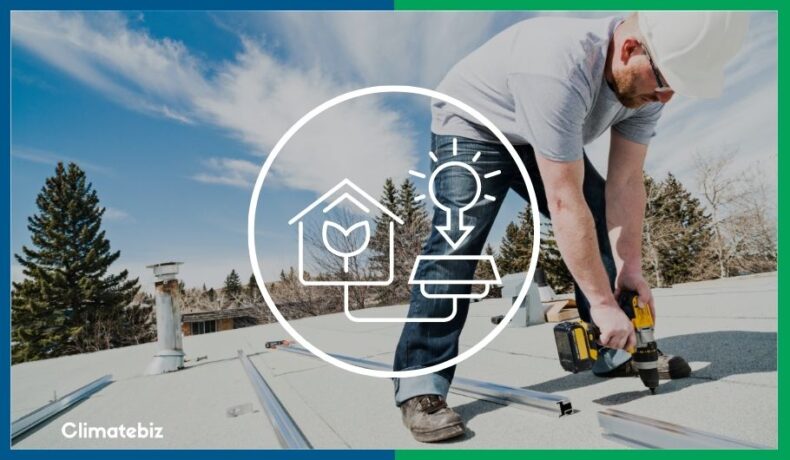Solar panel racking is a vital component of your PV set up. These systems provide your panels with the necessary angles and stability they require to get the job done.
The best part about these mounting systems is that they come in almost any form suited to your needs — from compact, rail-free roof racking systems to large ballasted ground-mounted ones.
But how do you maintain your solar roof racking? How long do they last? And will these mounting systems damage your roof?
This article answers these questions and more.
Table of Contents
Different Types Of Solar Panel Racking
There are three main variations of solar panel racking:
- Roof-mounted racks
- Ground-mounted racks
- Pole-mounted racks
Let’s have a look at each variation and their possible sub-variations in a little more depth:
Roof-Mounted Racks
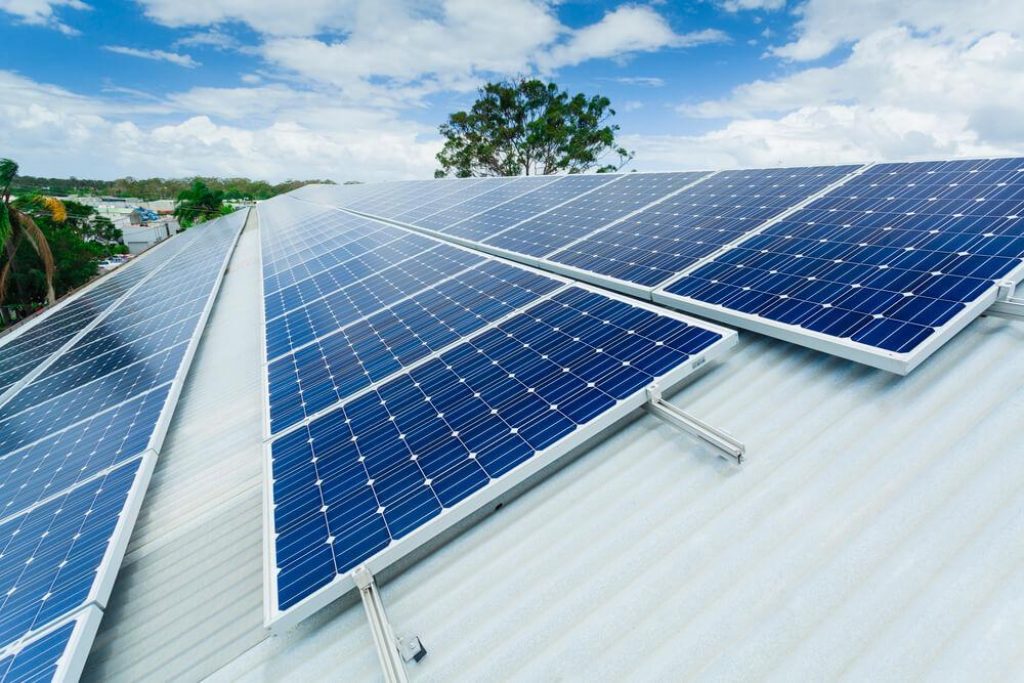
These PV arrays are attached to the roof of a building. Roof-mounted systems have several variations, including:
- Flat roof mounting
- Sloped roof mounting
Flat Roof Mounting
Flat roof mounting systems use concrete foundations to provide the solar panels with stability and maneuverability.
These setups can withstand external forces (heavy winds) while allowing the user to optimize the tilt of their panels.
Unfortunately, there aren’t many residential homes with large, flat roofs. So these setups are more prominent in the commercial sector.
Sloped Roof Mounting (Rail-Free)
Rail-free roof mounting consists of pre-assembled components that attach directly to the roof and modules. No cumbersome rails and no-in-field cutting requires.
Sloped Roof Mounting (Railed)
Railed roof mounting consists of solar panels attached to a line/line of rails which are fastened to the rooftop through a set of assemblies, screws, and bolts.
Ground Mounted Racks
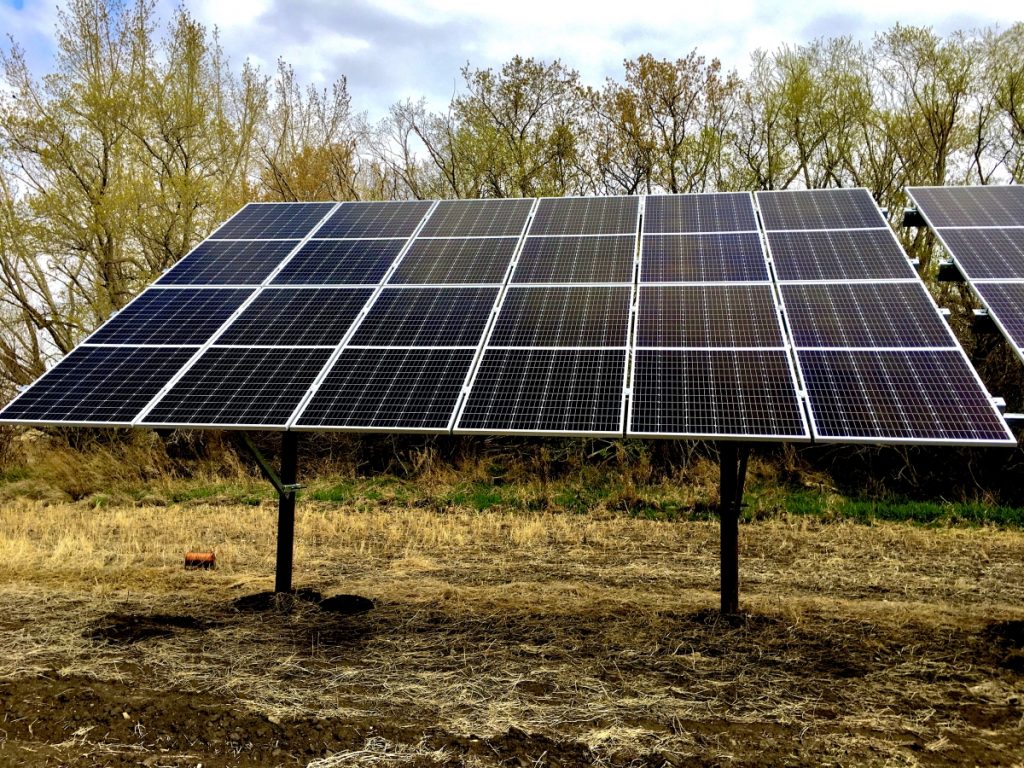
This solar panel racking mounts a row or multiple rows of PV modules to the ground.
Pole Mounted Racks
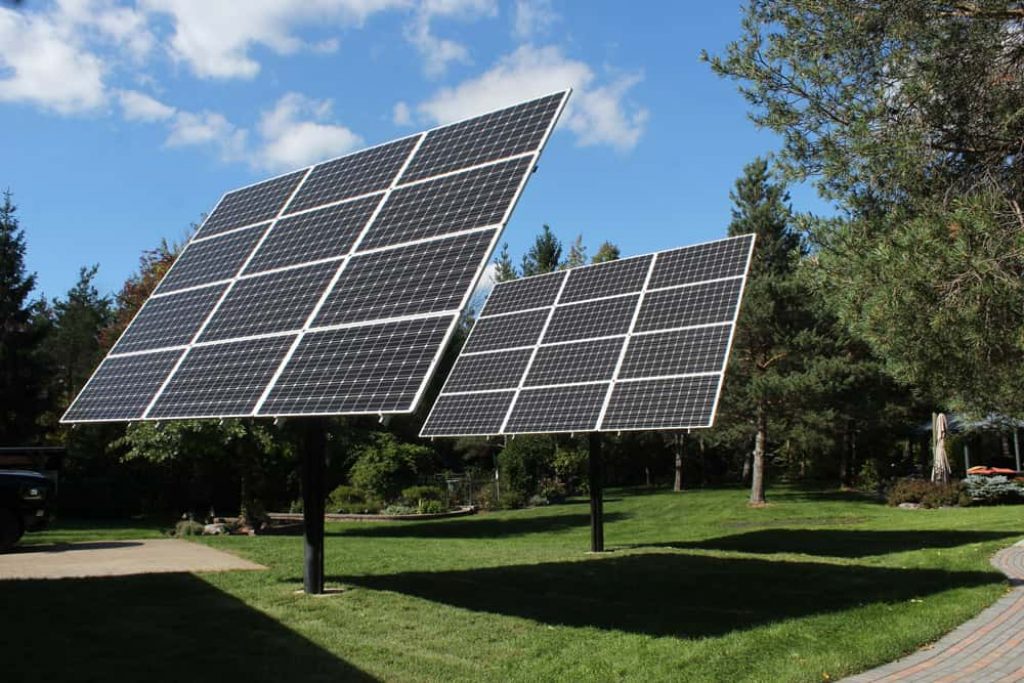
PV modules in these solar panel racking systems are mounted on the top or side of a pole structure.
Tracking System Mounted Racks
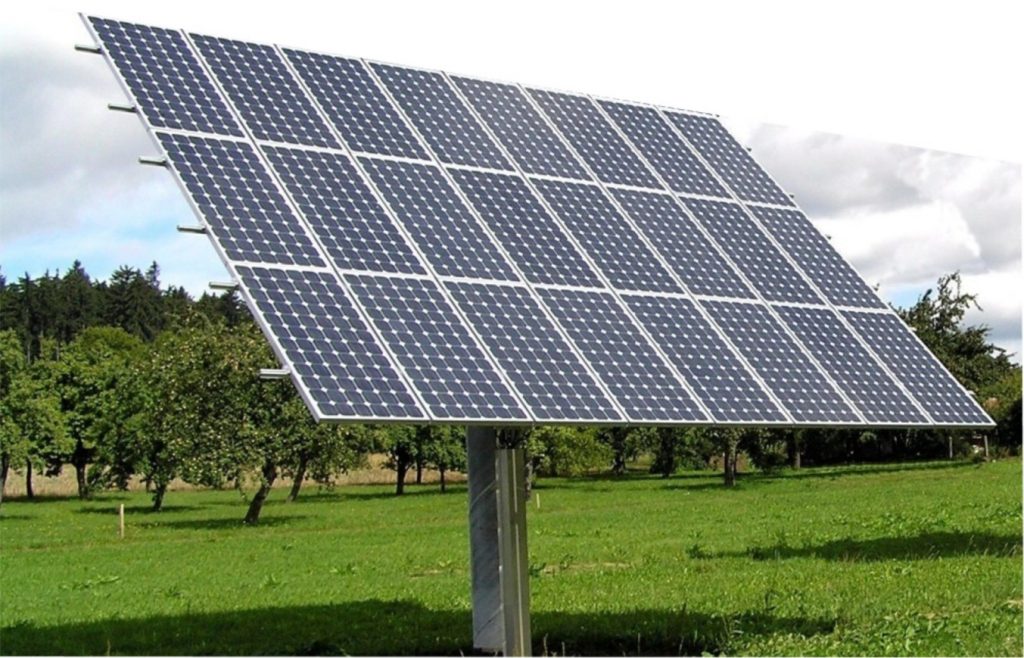
Pole-mounted solar panels can also be used with a solar tracking system.
These solar tracking systems adjust the direction of a solar array according to the position of the sun — they help keep panels perpendicular to the sun so that more sunlight can make contact with the surface of the panels.
There are two variations of mounted tracking systems: single-axis and dual-axis.
Single-axis trackers track the sun from east to west — they rotate on a single point. While single-axis trackers are technically less accurate than their dual-axis cousins, they have fewer moving parts. This makes them cheaper and easier to maintain. Should something go wrong, there is less downtime.
Dual-axis trackers rotate on both the X and Y axes. This makes their tracking process more accurate. Unfortunately, this also makes them more expensive and complex to maintain. Should something go wrong, the amount of downtime will likely be longer.
Check out this fascinating prototype project video by Sustainable Every Day for more information on these trackers.
How Much Does Solar Panel Racking Cost?
According to the National Renewable Energy Laboratory (NREL), your solar racking should cost approximately $0.10 per watt. Bear in mind this excludes the cost of installation.
How Long Does Solar Panel Racking last?
Solar mounting warranties vary considerably, from 5 to 25 years.
We understand that this estimate is nowhere near as accurate as you’d like it to be (it isn’t for us either). Still, it’s essential to understand that the wide range of materials used makes it difficult to provide you with a more precise answer.
Will Solar Panel Racking Damage My Roof?
Solar panel racking systems do have the ability to cause damage to your roof. But will they? The answer to that question depends on the following:
- The planning and execution of the installation process — an installation company with a high-quality labor force will ensure that your system is installed correctly (without causing damage). They’ll also be able to properly evaluate the condition of your roof and its layout before they proceed with the installation.
- Type of roof materials — fortunately, most roofing materials can accommodate solar panel installation; asphalt shingles, tile roofs, and standing metal roofs are ideal. Glass and thatch roofs, on the other hand, are a big no-no; they are susceptible to fire damage and breakage.
- System weight and complexity — a larger, more heavy racking system will put more strain on your roof. Whereas a smaller, lighter system will not.
- Age of your roof — if your roof’s material is acceptable but its condition has deteriorated (holes or other types of damage are present), your roof will be more susceptible to damage.
- Your location — those of you living in much colder regions will have to contend with ice and snow. These environmental factors can add extra weight, and therefore pressure, to your PV array and roof. If you don’t carry out any maintenance, you’ll find yourself in a world of trouble.
Ultimately
If: you use licensed, qualified professionals to install your panels, your roof is in good condition, and you carry out ongoing maintenance, your solar panel racking will not damage your roof.
How To Maintain My Solar Panel Racking?
Maintaining your solar panel racking is far more complex than simply cleaning your solar panels.
The issues that arise tend to be a lot more complex in nature. As such, they are best left to the professionals.
Fortunately, there is some general maintenance that you can perform. This, however, depends on the type of system that you have.
Roof-Mounted System Maintenance
The scope and cost of maintenance for your rooftop system depend on several factors:
- Scale of the roof
- Complexity of the roofs layout and PV setup
- Slope or pitch of the roof
- Condition of the roof
- Overburden waiver
- Roof warranty
What You Can Fix
If you’re are physically fit and have the necessary equipment (safety equipment included), you can carry out the following maintenance tasks yourself:
- Debris removal
- Snow and ice removal
- Ice dam removal
- Roof drainage maintenance
If, however, you’re financially capable of bringing in professionals, please do! It’s much safer that way.
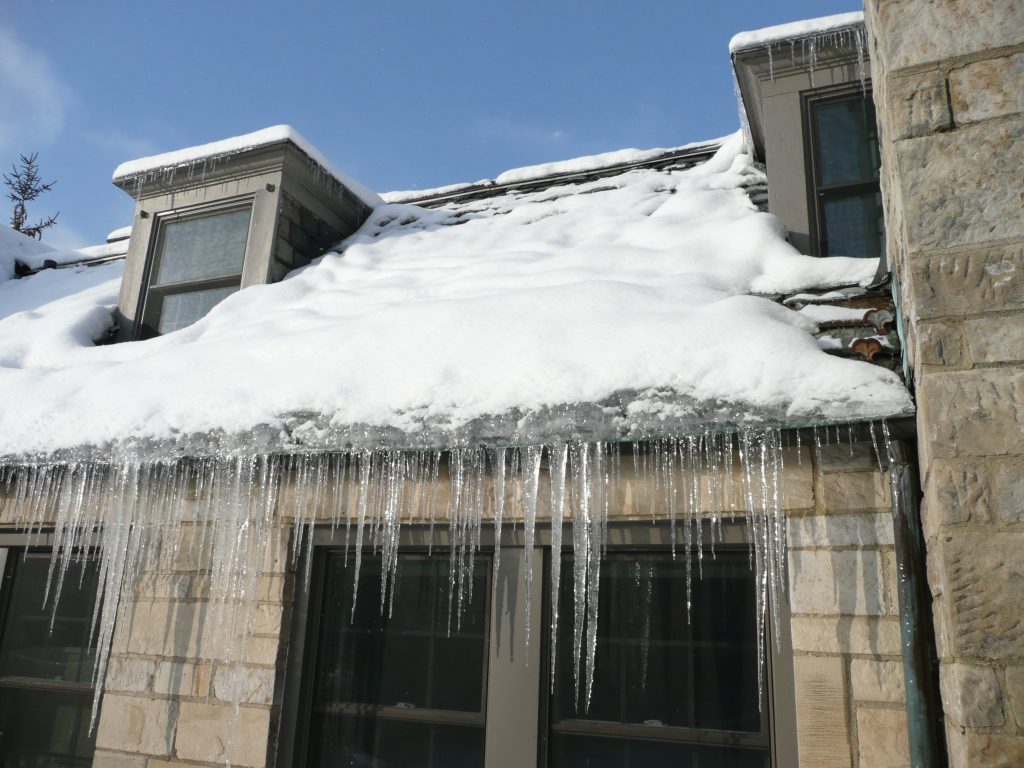
Source: Wikipedia
When To Call A Professional
PV arrays can be attached to a roof deck or structure, or they may be ballasted (held in place by added weight).
These setups can open up your roof to several issues that require professional assistance. You’ll need to look out for issues such as:
- Roofing material damage — the type of roofing material you have will effect how it handles the pressure of ballast systems.
- Compressible insulation — Issues can arise if your roof has compressible insulation. Membrane damage and ponding of water can take place. Ponding of water occurs in depressions under the weight of ballasted systems. This can stretch the membrane, accumulate dirt and increase the likelihood of abrasion.
- Wear on roof membrane — movement over time causes wear of the membrane; maintenance will be required to maintain the integrity of the membrane.
Ground-Mounted System Maintenance
Those of you with ground-mounted PV systems will be able to avoid some of the issues related to roof-mounted systems.
But don’t get too excited just yet; you’ll be facing your own set of issues.
What You Can Fix
Fortunately enough, you’ll be able to fix the majority of ground-mounted maintenance issues yourself (if you have the tools). These issues include:
- Vegetation management — you’ll need to carry out trimming, mowing, herbicide use, and tree removal to maintain the area around your ground-mounted array.
- Snow removal — an issue shared among all solar panel racking variations.
- General cleaning — ground-mounted arrays are much closer to source of dirt, debris, mud and pollen.
Pole-Mounted System Maintenance
Pole-mounted PV arrays require far more maintenance, particularly those with tracking systems.
These setups’ complexity and components mean that trained professionals should carry out maintenance. They’ll handle the following issues:
- Controls — the tracking controller, anemometer, and inclinometer are some of the controls that will require maintenance.
- Monitoring — manufacturers have remote tracking platforms to optimize preventative maintenance.
- Electrical — maintenance of various electrical connections.
- Rack & actuator — gearbox lubrication, universal joint inspection, and drive-shart torque, among other elements, need to be looked at.
- Battery replacement
Final Thoughts
More than ever, people are looking towards efficient and flexible systems to provide them with their energy needs.
PV mounting systems give you that and more.
Whether it be on a roof, a pole, or on the ground, these systems have helped make solar the viable, modular, and effective energy source that it is today.
It’s safe to say that solar roof racking systems have been an absolute game-changer in the world of solar.

